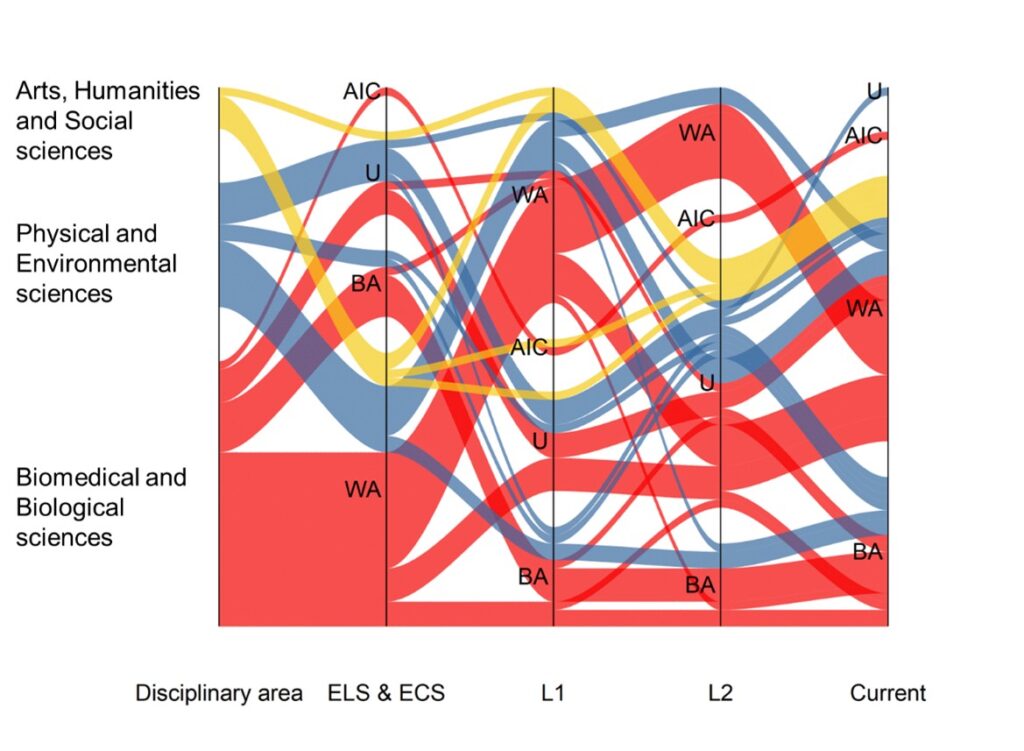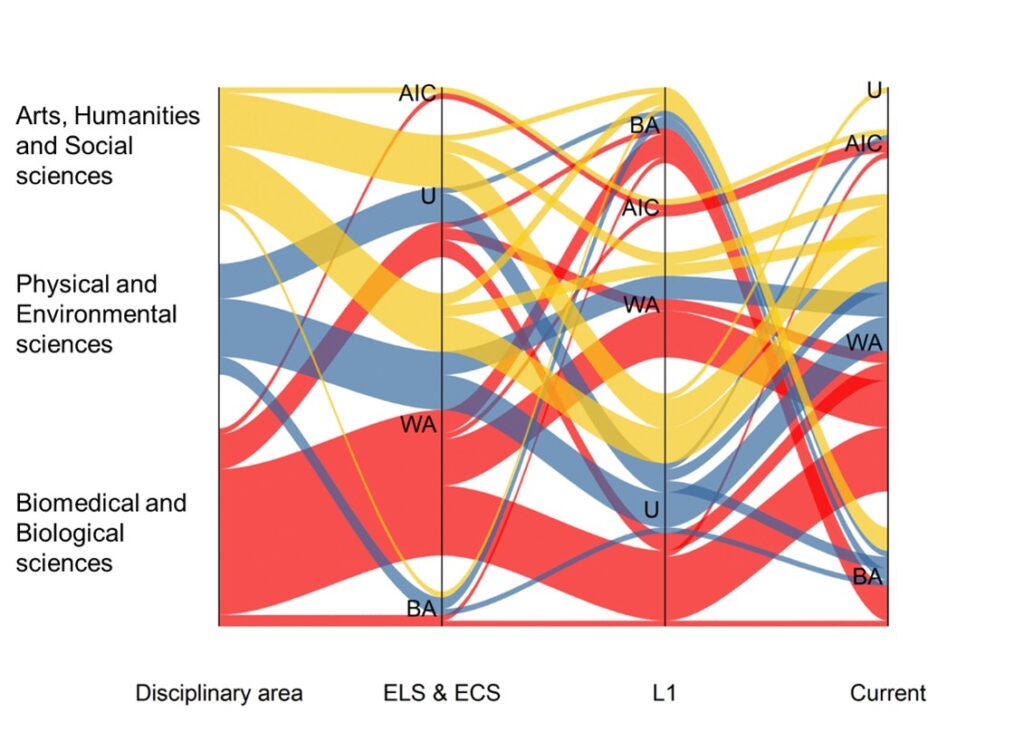Keeping track
Published:14/04/2025 by Stefania Silvestri Reading time:4 minutes
Prosper’s efforts to longitudinally track the careers of its pilot postdocs

The landscape of research careers is evolving rapidly. Researchers are increasingly mobile, and career trajectories increasingly varied and web-like.
However, getting a clear picture of this shifting landscape isn’t easy. Collecting comprehensive data on where postdocs go – and the shape of their careers over the long-term – can be challenging, with issues like fixed-term contracts, employment precarity, and international mobility complicating the task.
In a recent piece we state that there is a need for a better map of research careers in Research Professional, and the broader sector response, which you can read here.
However, Prosper itself is addressing these challenges through its own longitudinal tracking of the careers of participants in its pilot cohorts. In this blog, we summarise our efforts, as well as what we’ve discovered thus far.
Prosper’s longitudinal tracking
As part of Prosper’s RED-funded development phase, we committed to keeping track of the careers of our pilot cohort participants over the long-term – in order to better understand Prosper’s impact but also researcher careers in general.
In order to get a rounded picture of career trajectories, we collect both qualitative and
quantitative data.
We survey pilot participants annually following the end of the cohort they participated in (2022 and 2023 for our first and second cohorts respectively). We also ‘fill in the blanks’, so to speak, through use of publicly available information on platforms such as LinkedIn. A comprehensive summary of our findings can be found in our latest report here.
Mobility is categorised across three categories: beyond academia (BA), within academia (WA) and academia-industry collaboration/hybrid role (AIC).
As of February 2024 for pilot cohort 1, 35% BA, 62% WA, 2% AIC, 2% U. For pilot cohort 2, 23% BA, 69% WA, 7% AIC, 1% U. [U indicates that no information is available neither from surveys nor from public sources.]
The richness of the role transitions is lost in this aggregate data, so we sought to plot this (graphs 1 and 2). Of the hypothetically large number of possible transitions, we have seen a relatively small number of pathways. We saw no AIC to WA transitions and very few BA to WA transitions. Put simply, we see people leaving academia for a variety of roles beyond (or in hybrid collaborations), but very few moving back into academia.
This observation is in line with the findings from the NCUB Researcher career mobility taskforce Pathways to success reports (2023 and 2024), which highlight the need for greater fluidity of researchers between sectors.


Complementing the quantitative data, we also aim to pick up with individual cohort members for the purpose of personalised case study interviews – to find out, in their own words, what turns their career journey has taken since leaving the cohort.
These interviews can give deeper, more detailed insights into career decisions, and also serve the purpose of showcasing career options to other current postdocs. Our recent follow-up with David Ashmore, who is forging a career for himself at the Met Office (but switching roles along the way), is a good example.
Ongoing efforts
This tracking is an ongoing process. We will continue to update our findings as we conduct new surveys and collect more data.
However, a notable challenge concerns the declining number of survey respondents, which can impact the quality of data collected (see report pages 2 and 3), and require more dependence on extra-survey data collection methods from public sources (itself an imperfect process).
There is a pressing need for the sector more broadly to enhance its data collection efforts in this area. By increasing participations and improving tracking mechanisms, we can gain a clearer understanding of the rich web of postdoc career paths in the modern job landscape. This greater understanding is crucial to our efforts to better support the researcher community within academia from a people-development perspective.


 Refine
Refine

